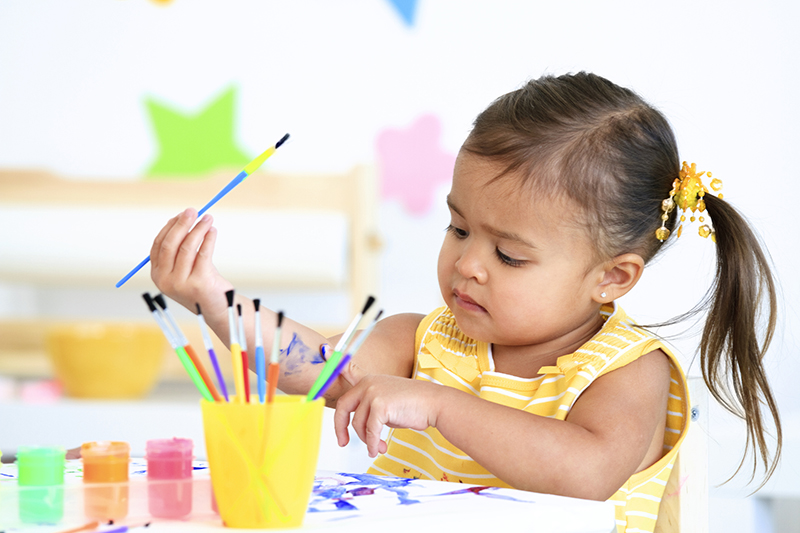Families For Life | Playing to Your Child's Strengths

Every parent/caregiver may have observed that children are naturally drawn to a variety of things. This natural inclination is most evident in play. Not only does preference for what to do varies from child to child, but how to play also varies from child to child.
As parents and caregivers, we can learn something from these variations in play – Children have their unique strengths. Many believe that by nurturing these unique strengths, we can help children flourish. It is important, however, not to hothouse children as this could create unnecessary stress.
How to play to your child’s strengths
1. Put yourself in the mindset of valuing your child’s growth over tangible success
Naturally, parents want the best for their child, but if success is at the forefront, this may lead to micromanaging the child and in turn devaluing the child’s sense of autonomy and psychological well-being (Schiffrin et al., 2014).
Instead, value your child’s growth instead of her success. To help children grow, give them the freedom to make their own decisions, even if they lead to mistakes. Previous research has found children raised by parents who support the growth of their autonomy had better cognitive skills and academic performance than those who did not have such support (Bindman, Pomerantz, & Roisman, 2015).
2. Identify your child’s strengths
Each child has a different type of learning style. So, try doing different activities to identify your child’s strengths and inclinations. Monitor your child’s reactions to regular and novel experiences. For example:
- Children can tell a story in many ways. Observe in what ways she expresses herself.
- Verbally - Does she describe a field trip or vacation when asked?
- Written – Does she like writing about her experiences?
- Drawing – Does she like to share her experiences pictorially, through drawings, paintings or sculpture?
- When playing at playgrounds, observe what your child enjoys the most.
- Does she enjoy exploring different toys and environments?
- Does she enjoy communicating with other children?
- When playing with an unfamiliar toy, observe how your child reacts.
- Does she ask for help?
- Does she watch how others play?
- Does she explore the object herself?
- When learning a new skill, observe which environment optimizes your child’s learning (i.e., seeing, hearing, touching). For example, if molding playdough for the first time:
- Does she learn best by watching someone demonstrate? (by seeing)
- Does she learn best by listening to instructions? (by hearing)
- Does she learn best by trying it herself? (by touch)
- When your child is in conflict with another child, observe how she approaches conflict resolution
- Does she try to understand the other’s feelings?
- Does she try to express her own feelings? (How does she do so?)
- Does she try to suggest a win-win?
3. Provide opportunities for your child to develop their strengths
- Present options
- Allow your child to take ownership of her activity
- Let your child make mistakes and bounce back from it
- For example, give your child a list of chores and allow her to choose which chore she wants to do.
4. Encourage your child to practise their strengths
Pursuing and engaging in activities can serve to develop and sharpen valuable life skills such as perseverance, determination, discipline, and goal setting. By encouraging children to enjoy activities that promote such skills (such as sports or art), they can enjoy themselves as well as help serve in career and life planning.
5. Introduce child to a role model that uses their strengths
Children learn best when they have role models with the same strengths.
In a small town in the U.S. (Norwich, VT), previous Olympians return home to inspire the youth in various sports. Some of these children end up in the Olympics years later! In fact, Norwich VT has had raised 11 Olympians over the years!
Do some research on potential role models. Even if it is impossible to meet the role models personally, you can use the internet and allow your child to watch videos. If this is not an option, remember that YOU as the parent/caretaker are always the biggest role model for your child.
Contributed by:
Dr Setoh Pei Pei
Assistant Professor
Nanyang Technological University, School of Social Sciences
Sources
- Bindman, S. W., Pomerantz, E. M., & Roisman, G. I. (2015). Do children’s executive functions account for associations between early autonomy-supportive parenting and achievement through high school? Journal of Educational Psychology, 107(3), 756-770. doi:10.1037/edu0000017.supp
- Crouse, K. (2018, Feb 8). What parents can learn from a town that produced 11 olympians. The New York Times. Retrieved from https://www.nytimes.com/2018/02/08/well/family/olympics-olympians-norwich-vermont-parents-children-sports.html
- Schiffrin, H. H., Liss, M., Miles-Mclean, H., Geary, K. A., Erchull, M. J., & Tashner, T. (2013). Helping or Hovering? The Effects of Helicopter Parenting on College Students’ Well-Being. Journal of Child and Family Studies,23(3), 548-557. doi:10.1007/s10826-013-9716-3